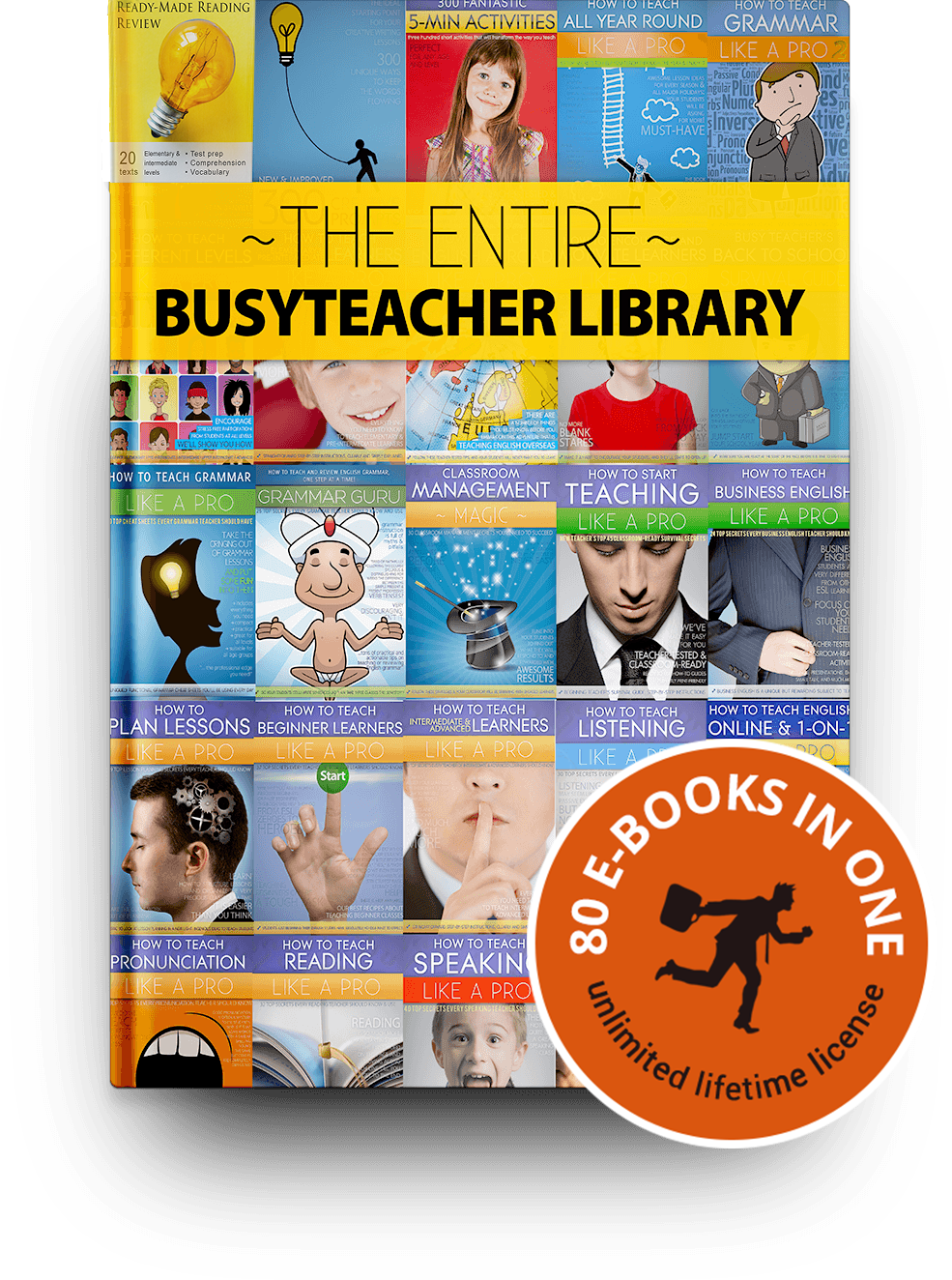Teach Adults to Read Volunteer Warwick Ri
How to Teach Reading Skills
10 Best Practices
by Stacia Levy 214,367 views
Reading classes are ofttimes very…quiet.
Of course, people are reading, and nosotros generally don't concur conversations and read at the same time. And we teachers usually like serenity classrooms, seeing the serenity every bit indicative of learning taking place. This is truthful in many cases, of course, but there are some drawbacks to these repose reading classes: they are not interactive, and it's been shown that interaction between students and students and instructor leads to greater processing of the cloth and therefore more than learning. In additions, it's hard to incommunicable to assess learning taking place without some talking; indeed, information technology'due south difficult to tell if students in a silent classroom are even reading and not daydreaming or really nodding off! Finally, these quiet noninteractive classes are just tedious, and boredom is not an incentive for students to come to class and learn. Still, there are several methods to address these concerns in reading classes by making them interactive and still teach reading.

10 Best Practices for Didactics Reading
-
1
Assess level
Knowing your students' level of instruction is of import for choosing materials. Reading should be neither likewise difficult, at a point where students tin't sympathize it and therefore benefit from it. If students don't sympathise the majority of the words on a page, the text is as well hard for them. On the other manus, if the student understands everything in the reading, there is no challenge and no learning. And then assess your students' level by giving them short reading passages of varying degrees of difficulty. This might accept upwards the kickoff week or so of grade. Hand out a passage that seems to exist at your students' approximate level then agree a brief discussion, ask some questions, and ascertain some vocabulary to determine if the passage is at the students' instructional level. If too easy or likewise hard, adjust the reading passage and repeat the procedure until you reach the students' optimal level.
-
2
Cull the correct level of maturity
While information technology's important that the material exist neither also hard nor likewise easy, a text should exist at the student's maturity level as well—it's inappropriate to give children's storybooks to developed or adolescent students. There are, still, edited versions of mature material, such as classic and popular novels, for ESL students, that will hold their interest while they develop reading skills.
-
3
Cull interesting textile
Detect out your students' involvement. Oft inside a course in that location are mutual themes of involvement: parenting, medicine, and computers are some topics that come up to listen that a majority of students in my classes have shared interest in. Ask students about their interests in the first days of class and collect reading material to match those interests. Didactics reading with texts on these topics will raise student motivation to read and therefore ensure that they exercise read and improve their skills.
-
iv
Build background knowledge
As a child, I attempted, and failed, to read a number of books that were "classics": Louisa May Alcott'southward "Fiddling Women" leaps to listen. It probably should take been a adequately piece of cake read, merely it was so full of cultural references to life in mid-nineteenth century New England that I gave up in defeat each time. It was non at my independent reading level, even if the vocabulary and grammatical patterns were, because of its cultural references. Why, for example, would young schoolgirls lust subsequently limes, as the youngest daughter in the story, Amy, and her friends do? Cultural material similar this would end me abruptly. Conspicuously, this was non independent reading for me because of its cultural references, and I needed help to navigate this text—to explain that limes, a citrus fruit, would have been rare and prized a century agone in New England with its freezing winters and before there were effective methods of transporting and storing fruit. Similarly, our students, many new to the U.S., would need equal assistance with such material. It is important for the teacher to anticipate which cultural references students might demand explained or discussed. This is non easy, of grade, but can become and so through such techniques equally related give-and-take earlier the reading (e.thousand., "Who knows what the American Ceremonious State of war was? When was it? Why was it fought?" or "Where is New England? Take y'all e'er been there? What is the climate similar?") A give-and-take before the reading on its topics builds background knowledge and the comprehensibility of the text equally well as giving the teacher an idea of where students' groundwork knowledge needs to be developed more than.
-
5
Betrayal unlike soapbox patterns
The narrative form is familiar to virtually students. In addition, it is popular to teachers. It is like shooting fish in a barrel to teach: we've been reading and hearing stories well-nigh of our lives. Notwithstanding, reports, business letters, personal letters, articles, and essays are as well genres that students will take to understand every bit they exit school and enter the working world. We understand the soapbox pattern of a story: that is, its design of organization. Information technology is related chronologically, for the most part; it is in the past with by tense verb forms; it is structured around a series of increasingly dramatic events that build to a climax or high point, and and then along. The soapbox design of an essay for instance, may exist less familiar simply still of import to understanding the text: that it is congenital around a series of topics related to one main thought or thesis. Knowing the discourse pattern lets the reader know what to expect, and therefore increases comprehensibility.
-
half dozen
Work in groups
Students should work in groups each session, reading aloud to each other, discussing the material, doing question and reply, and and so along. Working in groups provides the much needed interactivity to increase motivation and learning. Students may choose their ain groups or be assigned 1, and groups may vary in size.
-
vii
Make connections
Make connections to other disciplines, to the outside globe, to other students. Act out scenes from the reading, bring in related speakers, and or hold field trips on the topic. Assist students encounter the value of reading by connecting reading to the exterior world and evidence its use there.
-
viii
Extended practice
Besides often we complete a reading and so don't revisit it. However, related activities in vocabulary, grammer, comprehension questions, and discussion increment the processing of the reading and boost student learning.
-
9
Assess informally
Too often people think "examination" when they hear the word "assess." But some of the near valuable assessment can be less formal: walking effectually and observing students, for example, discuss the reading. Does the give-and-take evidence they really understand the text? Other means of informal assessment might be curt surveys or question sheets.
-
q
Assess formally
There is also a place for more formal assessment. Just this doesn't have to be the traditional multiple pick test, which oftentimes reveals fiddling more than than the test-takers skill in taking tests. The essay on a reading - writing nigh some aspect of Orwell'southward "Animate being Farm," for case - demonstrates command of the reading material in a way a multiple choice quiz cannot as the student really needs to understand the textile to write near the reading's extended metaphor of the farm.
Teaching reading presents a unique prepare of challenges because it is a receptive language skill.
However, if the instructor keeps in mind "receptive" doesn't take mean "passive" an interactive grade that improves student reading can be adult.
P.S. If y'all enjoyed this article, delight assistance spread it past clicking ane of those sharing buttons beneath. And if you are interested in more, you should follow our Facebook page where we share more most creative, not-tedious ways to teach English.

Become the Unabridged BusyTeacher Library:
Dramatically Improve the Way You lot Teach
Save hours of lesson grooming time with the Entire BusyTeacher Library. Includes the best of BusyTeacher: all 80 of our PDF e-books. That'south 4,036 pages filled with thousands of applied activities and tips that you can outset using today. 30-mean solar day money back guarantee.
Acquire more
Pop articles similar this


This is Irksome, and Too, I Don't Understand It
Sure-Burn down Ways to Turn Your Students on to Reading
 0
0  13,244
13,244  0
0

More Beginner�southward Luck
Must Know Strategies for Successful Reading for ESL Students
 0
0  xvi,841
xvi,841  0
0

Acme ESL Reading Strategies
Choral Reading vs. Reading Out Loud
 0
0  50,219
50,219  0
0

How to Teach Listening Skills
Best Practices
 0
0  307,772
307,772  0
0

Source: https://busyteacher.org/14461-how-to-teach-reading-skills-10-best-practices.html

0 Response to "Teach Adults to Read Volunteer Warwick Ri"
Post a Comment